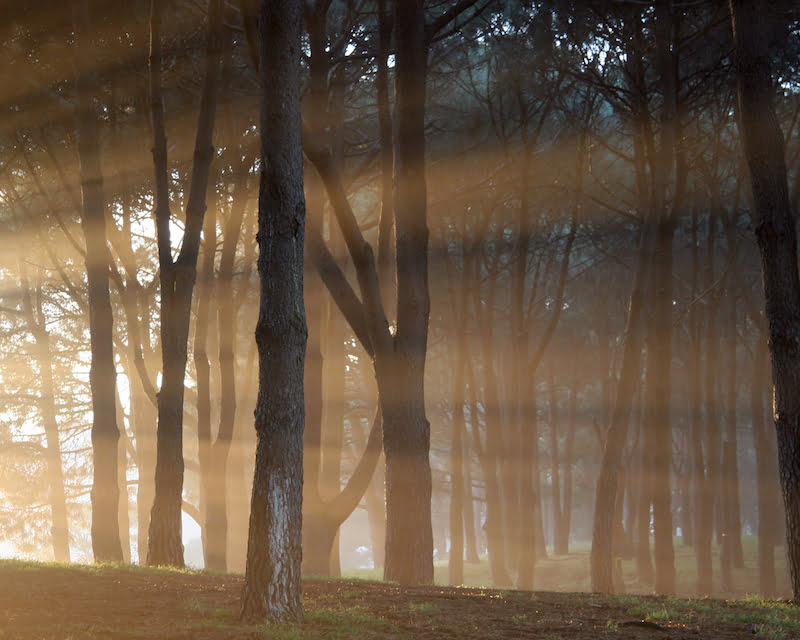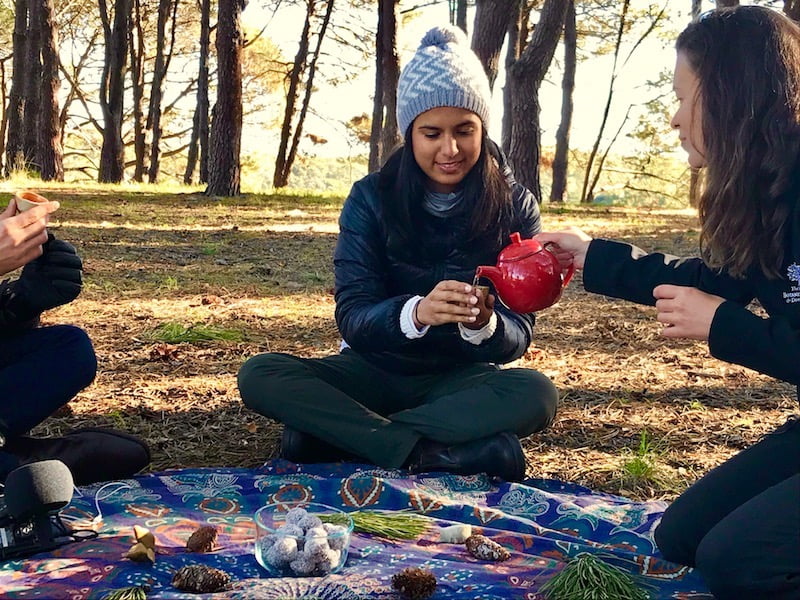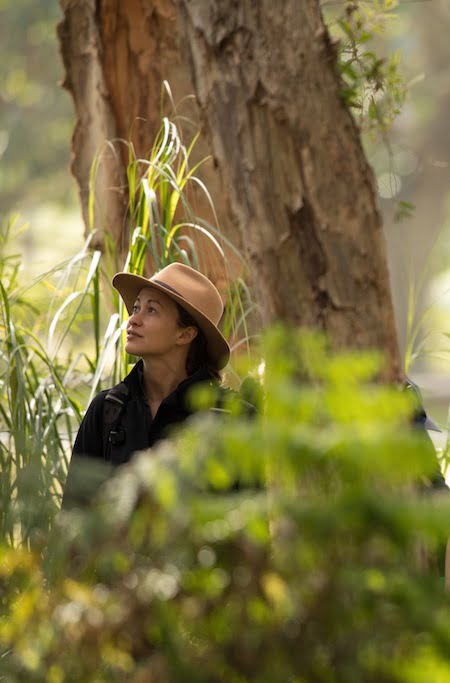Forest Bathing is the art of slowing down and noticing with your whole body. There is no cognitive effort required to learn the names or uses of plants and there is no objective to climb a mountain or arrive somewhere. It’s a mindfulness practice that you can become skilful at over time.
Forest bathing is a literal translation from the Japanese Shinrin Yoku and is defined as an immersive, sensory experience in nature. It involves moving slowly and mindfully in a natural place and using all your senses to connect to the world around you. It’s like a calming, soothing ‘bath’ for the nervous system in which you let nature soak in.
A typical forest bathing session involves a guided meditation, some very slow, mindful walking and various invitations to connect to nature through different senses. This often moves imagination, directional sense and intuition. Participants then come together in a group and are invited to share experiences. This practice is socially connecting and soothing.

Pine Grove, Centennial Park Sydney
The beginning: The term forest bathing was coined in 1982 by the Japanese Government in response to high levels of stress and burnout in the urban working population. Another term was created for this phenomenon; karoshi, death by overwork. The Japanese Government funds scientific studies that measure the physiological effects, or changes in heart rate, blood pressure and cortisol, of walking on forest trails. Currently there are 48 official forest therapy trails designated for Shinrin Yoku by Japan’s Forestry Agency. Forest bathing is standard preventative medicine and wellness science in Japan. Doctors can recommend forest bathing as a preventative measure or complementary treatment for stress-related illness.
The health benefits: There is growing evidence suggesting that human physical and psychological wellbeing is highly dependent on nature. Compared to urban walks, leisurely forest walks have been shown to lower sympathetic nervous activity, blood pressure, heart rate and cortisol. They can improve our mood and decrease stress, anxiety and depression. Studies have also shown that forest walks can stimulate the production and activity of Natural Killer Cells, the immune system’s anti-tumour and anti-viral cells, by as much as 50 per cent after just three 2-hour forest walks. Nature also helps us to be more empathetic, focused and grounded and increases our cognitive function, mental clarity, creativity, optimism and hopefulness.

Connecting with nature
The science: A variety of EEG (electroencephalography) and MRI (magnetic resonance imaging) studies have been performed both out in nature and in laboratories (with people viewing nature scenes) to examine the effects of nature on the brain. They have shown that when people are in or viewing urban environments, there is activity in the prefrontal cortex (the task-orientated part of the brain, which becomes fatigued by continuous stimulation and attention) and the amygdala, which is associated with fear and anxiety. In contrast, when we are in nature or viewing nature, the prefrontal cortex and amygdala are generally less active and blood goes to other parts of the brain associated with pleasure, empathy, compassion and unconstrained thinking. What’s called the executive network of the brain has a rest and time to restore, whilst the default network (the day dreaming, free ranging part of the brain associated with creativity) comes alive.
Japanese studies have also focussed on phytoncides, the nice smelling organic compounds secreted by trees in response to pathogens. They are part of the tree’s immune system and they seem to act on our immune system as well. Studies have shown 50 per cent increases in number and activity of the human body’s anti-tumour, anti-cancer and anti-viral cells or Natural Killer (NK) cells) after people went Forest Bathing for three days in a row. The increases in NK cell activity remained a month after returning to urban environments. These results were also found in a lab experiment, where NK cells exposed to phytoncides increased their expression of anti-cancer proteins.

Being in the forest
Do you need a forest? Brain scans of people viewing nature scenes in labs would suggest that you don’t have to be out in nature to produce a physiological effect in the brain. Simply looking at an image of nature can be restorative. However, the effects are likely amplified when all the senses are engaged and we’re actually out in nature- listening, smelling, feeling and moving in a mindful way. Also, with nature it’s a dose-response effect. The bigger and more awe-inspiring the nature, and the more fully immersed in it you are, the more powerful the restorative effect will be. However, as long as we’re being mindful and fully absorbed, we can have meaningful and effective interactions with nature on small scales on a daily basis. Even having a pot plant on your desk at work has been shown to have a restorative effect on your cognition and attention. Let yourself examine its leaves and smell its flowers. Have a mini green-meditation routine a few times a day.
Forest bathing in Centennial Park:As one of the few forested areas in Sydney and one of its best loved green-spaces, Centennial Parklands runs Shinrin-yoku inspired forest bathing walks. The purpose is to give Sydney-siders that much needed break from the face-paced, stressful lifestyle of the city.
